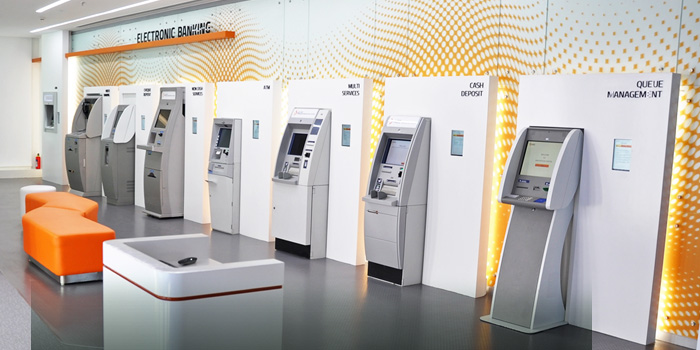In the era of digitisation, Indian traditional payment channels such as Bank branches & ATMs have also seen numerous upgrades.
In the era of digitisation, Indian traditional payment channels such as Bank branches & ATMs have also seen numerous upgrades. In addition to enhancing user experience & convenience, these upgrades and innovations have helped banks optimising resources without hampering their overall efficiency. Further, given the fresh RFPs being floated by leading banks, it is estimated that there would be a deployment of around 50,000 ATMs/CRMs in this financial year. Recently, Honourable Prime Minister Shri Narendra Modi inaugurated 75 Digital Banking Units (DBUs) with the aim to provide last-mile accessibility of banking services.
What are Digital Banking Units?
Each Digital Banking Unit (DBU) will be a specialised fixed point business hub housing digital infrastructure. Unlike a traditional bank branch, DBUs will be completely paperless.
In addition to cash withdrawal/deposit through an ATM/CRM, the DBUs will offer users a complete digital experience including the opening of bank accounts, fixed deposits & recurring deposits, printing of passbooks, mobile banking, internet banking, issuance of debit cards, credit cards, and mass transit system cards etc., through various digital touch points. These services will also include end-to-end processing of paperless loans for merchants and MSMEs.
How will these services benefit customers & banks?
As DBUs will house most essential banking services in a secured and connected environment, customers will be able to avail banking services in a cost-effective, convenient and paperless manner – all year round. While these services will be made available through self-service mode, there will be manual assistance through select hours of the day. This assistance will help customers from rural, semi-urban, tier III & below areas, senior citizens, or customers with little or no digital experience to avail benefits of digital banking. Subsequently, this experience will increase awareness of digital payments amongst a wider group of people.
For digitally-savvy customers, these DBUs will enhance the level of convenience and offer them the ease of doing mundane banking activities in a faster, seamless & secure digital environment. This will also benefit customers in remote areas – especially with low banking penetration as the cost of operating & maintaining bank branches will significantly go down.
There are numerous benefits of Digital Banking Units for banks as well. With the setting up of DBUs, banks can reduce the size of physical branches and enhance their digital capabilities to offer largely self-service model-based banking facilities, thereby reducing overall operational costs.
How can payment technology players help banks in this journey?
According to RBI’s notification on the Establishment of Digital Banking Units (DBUs) dated April 7, 2022, all Scheduled Commercial Banks (excluding Regional Rural Banks, Local Area Banks & Payments Banks) are allowed to opt for an insourced or an outsourced model for the implementation of DBU services. This notification also states that each Digital Banking Unit must house products such as PoS, ATMs, CRMs, Internet Banking Kiosks e-KYC kiosks etc. Since payment technology players such as AGS Transact Technologies are already equipped to offer such products & solutions, banks can outsource the setting up of DBUs to them and focus on enhancing customer experience.
As of September 30, 2022, AGS Transact Technologies Ltd had installed, maintained or managed a network of approximately 73,582 ATMs and CRMs and installed 245,215 merchant PoS terminals. We also offer cheque deposit kiosks, interactive kiosks, and e-surveillance solutions, which will be integral for the seamless operation of a DBU. This puts AGSTTL in an advantageous position to manage full-fledged DBUs on behalf of leading banking customers.
In conclusion, DBUs have the potential to transform Indian banking ecosystem and bring more customers under the ambit of digital India. In tier 3 & below cities, DBUs can potentially deepen the acceptance of digital solutions with merchants opting for paperless loan procedures and retail customers enjoying round-the-clock banking facilities. Further, it will truly ensure the coexistence of cash & digital solutions – thereby strengthening the overall payment ecosystem pan India.
A detailed version of this article first appeared on LiveMint


